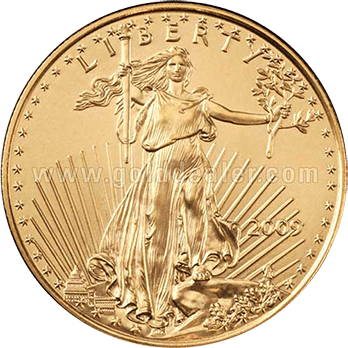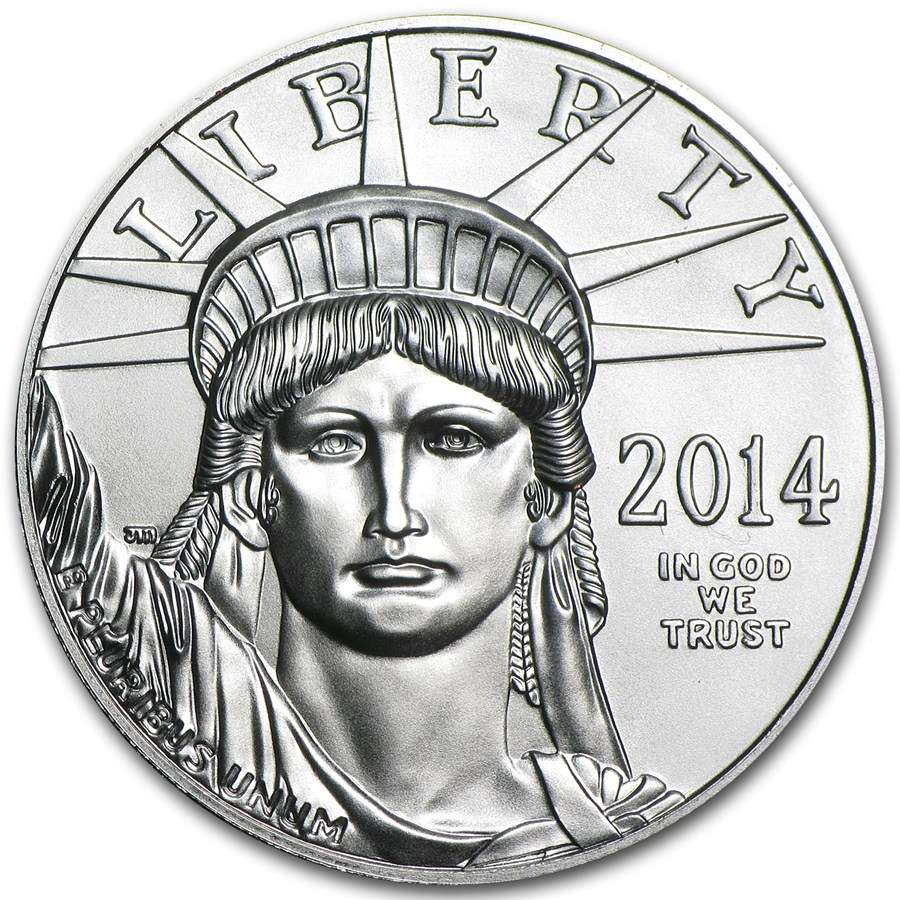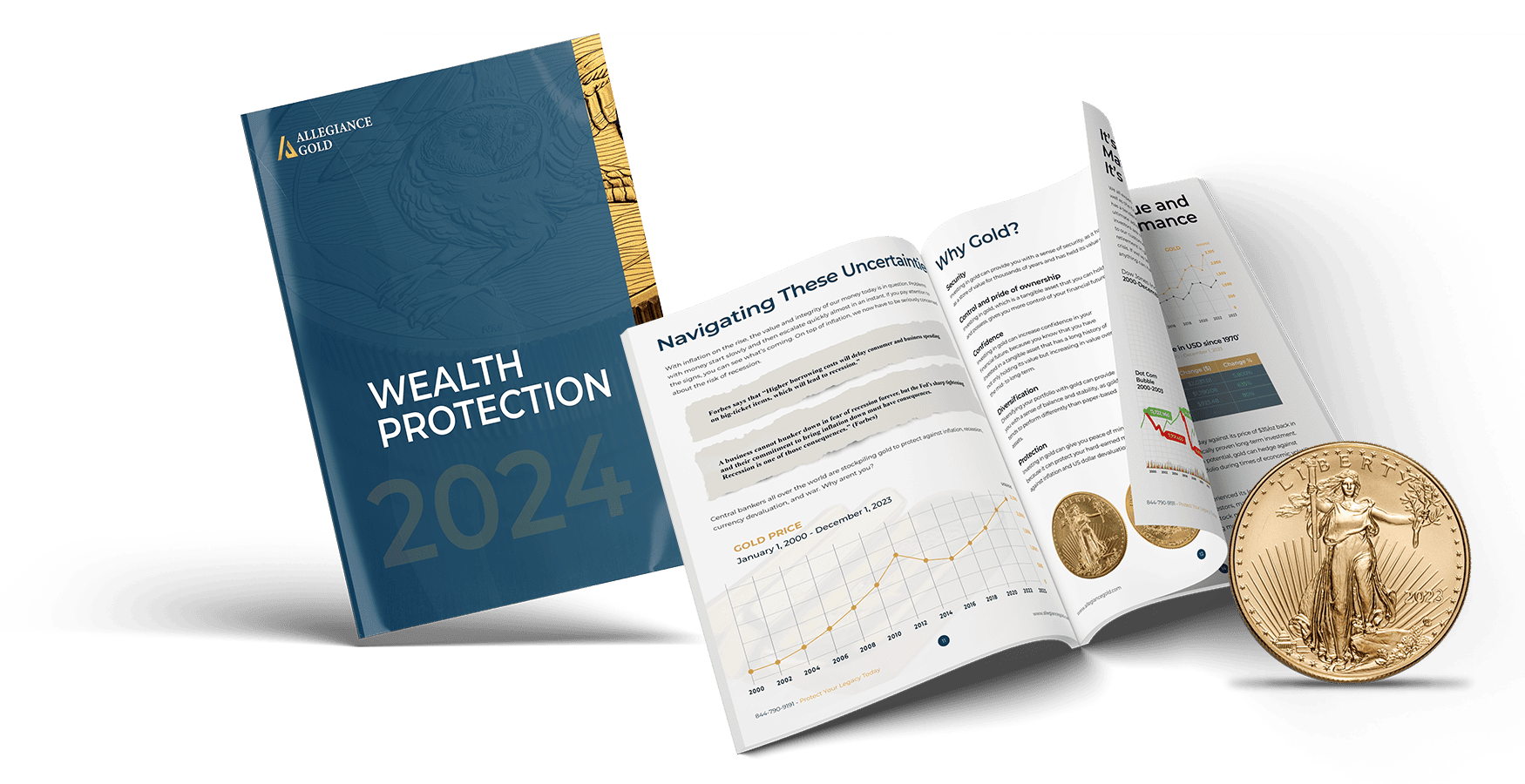Are you thinking of investing in gold?
According to reports from the WEC, the world is at a point of significant economic danger. Gold has long been considered a safe haven asset, one that can hold its value in times of inflation and economic unrest. Thanks to this, it’s one of the mainstay assets to include in your portfolio for diversification.
Another reason people turn to gold is that it has inherent, tangible value. Unlike the financial system that can be manipulated and inflated with new circulations of money from the fed, gold’s value isn’t dependent on fiscal policies.
Right now the Financial Trust Index shows that 50% of Americans feel that the US financial system hurts the US economy to some extent. If you’re worried that fiscal policies are going to erode the value of your investments over time, diversifying into precious metals is a sound plan.
However, there are a few things to be aware of before you start buying gold.
Continue reading to find out the most common mistakes to avoid when investing in gold.
Buying Too High Above Spot Price
One of the first mistakes people make when investing in gold is buying at prices that are too high above the spot price. Generally, you should aim to pay no more than 2%-5% above the spot price.
There are some exceptions to this. For instance, if you’re buying gold coins that have a high numismatic value, you can expect to pay more.
However, if you’re investing in gold bars, try to get as good a price as you can. The closer to spot price you can get, the more gold your money will be able to buy.
A couple of percent either way might not sound like a big deal, but it can add up quickly if you’re shifting investment money into gold. For instance, let’s say you’re planning to buy $15,000 worth of gold.
At the current spot price, this will get you just over 9 ounces of gold. At 2% above the spot price, you’ll be able to buy 8.9 ounces. At 5%, you’ll get 8.6 ounces.
If a dealer rips you off by charging a 10% bullion premium, you’ll only be able to buy 8.2 ounces.
Most reputable gold sellers won’t charge you much over 5%. However, if you visit a small gold dealer, you might find that they ask a higher bullion premium.
This is especially common in small towns and out-of-the-way areas where one merchant might have a monopoly. Bullion premiums can also rise dramatically in countries that are experiencing unrest, where the population is running to turn their fiat into precious metals and demand is at a premium.
Buying When the Price Is High
Another mistake to avoid is buying gold when the price is high. If you buy at the top, when gold is making investment headlines, you’ll get less for your money. You’ll also have to wait longer for it to appreciate past the level you bought at.
Ideally, you want to time your buy when nobody is talking about gold and the prices are low. This is not always easy to do, but if you take a look at the price history of gold, you should be able to make an informed decision on where the price is at.
For instance, if we look back over the last few years, we can see that the gold price shot up during 2020 and 2021. This was thanks to pandemic-driven gold investing.
As the markets were flooded with uncertainty and stock values crashed overnight, many investors transferred a portion of their holdings into gold.
Fast-forward past the pandemic uncertainty and gold’s price has dropped once again. Overall market sentiment is still somewhat down, making this as good a time as any to buy gold.
If you’re investing in gold now, as opposed to during the height of the pandemic, you can lock in a better price and more potential for appreciation.
That said, because gold holds its value against inflation, it’s never a bad time to buy gold. Even if the market is up a little, you should still see a strong return on your investment over time.
Buying Gold Coins Without Learning About Numismatic Value
One of the most common mistakes people make when buying gold is paying top dollar for gold coins without familiarizing themselves with numismatic values.
Some gold coins are worth substantially more than the gold they contain. This is because they have what’s known as numismatic or collector’s value.
For instance, a 1787 Brasher Doubloon, one of the most valuable coins in the world, sold on auction in 2021 for $9.3 million.
However, this doesn’t mean that every gold coin you can find for sale will attain a high future value. Numismatic values are determined by scarcity, the condition of the coin, and supply and demand.
If you want to buy gold coins, always make sure you work with a reputable, professional supplier who won’t try to hoodwink you with deceptive or inflated claims on collectible values. You should also do your own research so you have a general understanding of the numismatic value of silver and gold coins.
Buying Gold as a Short-Term Investment
As we said above, gold can be a strong store of value and a valuable inflation hedge. However, gold usually performs best over the long term.
Although not as volatile as some other asset classes, it does fluctuate in value, especially if the overall markets are in a state of flux.
Therefore, unless you’re a seasoned trader, we’d advise against making short-term trades in gold.
Professional traders can time the dips and swings in the market, buying low and selling high. But for the average investor, short-term strategies like this can be a risky business. Trying to time the market as a novice is very difficult, and could cause you to panic sell when momentum goes against you.
We’d also recommend against locking up money in gold that you’ll need in the immediate short term.
For example, let’s say you received a lump sum amount that you’re intending to put towards a downpayment on a property in a year’s time. In the interim, instead of letting the money sit idle, you decide to invest it into gold.
If this was a longer-term investment, it would be a smart move. However, in this hypothetical situation, you need to access the money in 12 months. When that time rolls around, you won’t have any guarantee that gold’s value will have risen.
It might have gone through a price dip in the last few months. If you sell your gold investment then, you would be forced to realize a loss.
Investing In Gold ETFs
One of the decisions you might need to make when investing in gold is whether to buy actual gold or buy ETF shares.
Buying shares in an ETF can be advantageous for some people. But for the average person looking to make a gold investment, this is not the route we would take.
Why? Gold ETFs are best suited to professional traders who need to be able to move in and out of positions in the precious metals market with ease.
Gold ETFs are the perfect way to do this because they allow traders to buy and sell gold positions just like regular stocks. ETFs also allow traders to open short and long positions, and come with none of the logistics-related costs of owning and storing physical gold.
ETF Shares Don’t Equal Gold Ownership
However, ETFs have a few drawbacks, especially for the private investor. Firstly, when you buy shares in a gold ETF, you don’t own the actual gold.
Gold ETFs are also riskier than buying physical gold because ETFs are traded on the derivatives markets. There’s no guarantee that an ETF won’t go bust.
If the balance sheet goes boom, and the ETF company faces asset liquidation, you could lose your investment almost overnight.
ETFs also don’t offer quite the same economic safe haven as physical gold. ETFs are part of the financial system that gold safeguards against.
ETFs Don’t Come With Any Tax Advantages
Besides these fundamental differences, ETFs also don’t offer any tax advantages.
Most stocks and bonds are subject to a capital gains tax rate of up to 20%. Gold, on the other hand, is treated a little differently by the IRS.
Because it’s classified as a collectible, gold attracts a capital gains tax rate that’s equal to your marginal tax rate, to a maximum of 28%. Because gold ETFs are backed by physical gold, unlike regular stocks they too attract a tax rate of up to 28%.
Gold ETFs also don’t offer any opportunities for tax deferral.
If you want to buy physical gold, you have the option to make a gold investment via a gold IRA. This allows you to enjoy all of the tax benefits that IRAs offer, including deferring capital gains tax until retirement when your tax rate will likely be a lot lower.
If you want to learn more about this tax-savvy, convenient way to go about investing in gold, we go into more detail in the following sections.
Storing Gold at Home
Another common mistake people make when investing in gold is opting to store the gold themselves. Buying gold bars or gold coins and storing them at home is an inherently risky move, and not just for the obvious reason, which is the increased risk of theft.
Thanks to the security risks around storing gold at home, some people choose to store gold bars and coins in safety deposit boxes. While this reduces the chance of losing your investment to theft, it’s still not the wisest storage solution.
If you choose to store your gold investment in your home or in a safety deposit box, you will break what’s known as the chain of custody. Instead of being in a controlled storage vault, the gold will disappear from the documented chain of custody.
When this happens, precious metals typically lose a portion of their value. One of the reasons for this is that as an individual you won’t have access to a competitive resale market.
When and if you choose to sell your gold investment, you may be forced to liquidate it at a lower price thanks to limited local demand and high bullion premiums.
Ignoring Gold IRAs
One of the most significant mistakes you can make when investing in gold is ignoring gold IRAs.
Gold IRAs offer the ability to transfer a portion of your IRA into gold and other precious metals. They are IRS-approved retirement accounts that function just like a regular IRA. They come with all of the tax deferment benefits that traditional IRA accounts have, while not limiting you to stocks, bonds, and mutual funds.
What’s more, gold IRAs also allow you to transfer or roll over a portion of your existing IRA into gold without triggering any tax implications.
If you open a gold IRA, you can also leverage an annual contribution of $6,000 if you’re under 50 years of age, or $7,000 if you’re over 50.
With a gold IRA, you can achieve true portfolio diversification and an added layer of protection through tangible precious metal assets with a strong track record as an inflationary hedge and reliable profit potential. Gold is an alternative uncorrelated asset that can safeguard your funds when governments, markets, and currencies fall into turmoil.
Do You Want to Start Investing in Gold the Smart Way?
Investing in gold is one of the best moves you can make to protect your portfolio from inflation and the impacts of economic uncertainty. As tangible assets, gold and precious metals have something that no paper-backed asset can carry—intrinsic value.
Although you can opt to buy physical on the side, we would recommend looking into a gold IRA or precious metals IRA.
Gold IRAs allow you to diversify into precious metals without triggering capital gains tax on the sale of assets. They also give you the rare opportunity of tax deferment on precious metals, and ensure your gold investment is secured and safeguarded, while still giving true ownership over the gold bars or coins you buy.
Are you interested in opening a gold IRA? We are the people to speak to.
Simply head over to our gold IRA page to learn more about this unique type of IRS-approved retirement account.



 Custom Precious Metals IRA
Custom Precious Metals IRA



